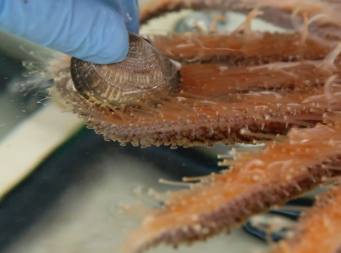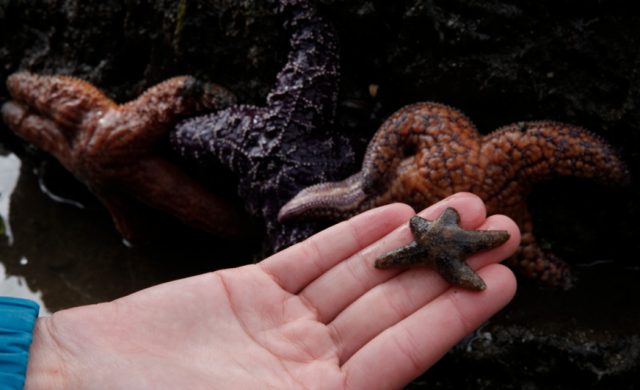In this QUEST video, we travel to the shores of Washington’s Puget Sound and join a group of scientists and volunteer divers as they shimmy into wetsuits and double check their air tanks.
They move with the urgency of a group on a mission -- and they are. They’re trying to solve a marine mystery. “We need to collect sick ones as well as individuals that appear healthy,” Ben Miner tells the divers as they head into the water. Miner, a biology professor at Western Washington University, is conducting experiments with hope of figuring out how and why starfish, or sea stars as scientists prefer to call the echinoderms, are wasting away by the millions up and down North America’s Pacific shores.
It’s called "sea star wasting syndrome.” When afflicted, the sick stars begin to look deflated and are unable to hold onto rocks. Sometimes lesions form on their skin, and within a day or two of showing symptoms, they melt into piles of mush. Scientists first started noticing sick and dying sea stars in the summer of 2013 at a place called Starfish Point on Washington’s Olympic Peninsula. Reports have since surfaced of it along the coasts of Oregon and California and as far north as Alaska.
In all, more than 20 species of sea stars are dying from the disease. “This is the largest disease outbreak that we know of ever in the oceans in terms of the numbers of species affected, in terms of the geographic scale, and in terms of the mortality that’s associate with it," said Drew Harvell, a marine epidemiologist at Cornell University who has been leading nationwide efforts to understand these outbreaks.
On Monday Nov. 17, a team of more than a dozen researchers, including Harvell and Miner, published a paper reporting that the cause of the die-off appears to be a previously unknown virus. Their research, which was featured in the journal Proceedings of the National Academy of Sciences, found that the apparent culprit, a type of densovirus distantly related to parvovirus, which can infect dogs and cats, actually was present in museum specimens of starfish dating back to 1942. What caused the virus to explode out of control now, and “go rogue” as one scientist said, will be studied further in the months and years ahead. It could be a natural occurrence, such as overpopulation, or a human-caused trigger, like pollution or warming oceans from climate change.

